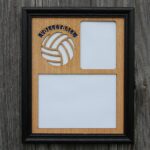I. Introduction to Mold Making
II. Types of Molds and Casting Materials
III. Steps in Creating Molds and Casts
IV. Turning Molds and Casts into Profit
So, you’ve got a creative spark and you’re looking to bring your unique designs to life – enter the world of mold making! Whether you’re an artist, crafter, or DIY enthusiast, mastering the art of mold making opens up a whole new realm of possibilities for you to explore. Let’s dive into the exciting world of mold making and discover how you can transform your ideas into tangible creations!
When it comes to mold making, the possibilities are endless. From intricate sculptures to functional objects, molds allow you to replicate your designs with precision and consistency. Imagine being able to create multiple copies of your favorite figurine, jewelry piece, or home decor item – all with just one mold! The process may seem daunting, but with the right tools, materials, and know-how, you’ll be on your way to becoming a master mold maker in no time.
So, what exactly is mold making? In simple terms, mold making is the process of creating a negative impression of an object, which is then used to produce multiple copies of the original. Think of it as creating a reusable mold that captures all the intricate details of your design, allowing you to replicate it over and over again. Whether you’re working with clay, resin, wax, or even chocolate, molds are the key to unlocking your creativity and turning your ideas into reality.
Now, you may be wondering – why bother with mold making when you can simply create each piece from scratch? Well, aside from saving time and effort, molds provide a level of consistency and precision that is hard to achieve by hand. Plus, once you have a well-made mold, you can easily reproduce your designs in a variety of materials, colors, and finishes, opening up a whole new world of possibilities for your creations.
But where do you start? The world of mold making can seem overwhelming at first, but fear not – we’re here to guide you through the process step by step. From choosing the right materials to mastering the techniques of mold making, we’ll help you navigate the exciting journey of bringing your designs to life through the art of mold making. So grab your tools and let’s get started on this creative adventure!
Types of Molds and Casting Materials
When it comes to mold making and casting, the possibilities are endless! There are various types of molds and casting materials to choose from, each with its own unique characteristics and uses. Let’s dive into the fascinating world of molds and casting materials:
Types of Molds:
- Silicone Molds: Silicone molds are a popular choice for many artists and crafters due to their flexibility and durability. They can capture intricate details and are easy to demold, making them ideal for creating replicas of sculptures, jewelry, and more.
- Plaster Molds: Plaster molds are commonly used for creating simple shapes and are great for beginners. They are affordable and easy to work with, making them a versatile option for a wide range of projects.
- Latex Molds: Latex molds are known for their stretchiness and ability to capture fine details. They are often used for creating molds of organic shapes and textures, such as leaves, flowers, and figurines.
Casting Materials:
- Resin: Resin is a popular casting material that can be easily tinted and molded into various shapes. It cures quickly and can be polished to a smooth finish, making it a favorite among artists and hobbyists.
- Plaster: Plaster is a versatile casting material that is easy to work with and can be used for creating detailed sculptures, masks, and other decorative items. It sets quickly and can be painted or sealed for a professional look.
- Metal: Metal casting materials, such as pewter or aluminum, allow for the creation of durable and long-lasting objects. Metal casting can be more complex and require specialized equipment, but the results are well worth the effort.
When choosing molds and casting materials for your projects, it’s important to consider the level of detail required, the complexity of the shapes, and the desired finish. Experimenting with different combinations of molds and casting materials can lead to exciting and unique results!
Remember to always follow safety precautions when working with molds and casting materials, such as wearing protective gear and working in a well-ventilated area. With practice and creativity, you can master the art of mold making and casting and create stunning pieces that showcase your talent and imagination.
“`html
Types of Molds and Casting Materials
When it comes to mold making and casting, the possibilities are endless! There are various types of molds and casting materials to choose from, each with its own unique characteristics and uses. Let’s dive into the fascinating world of molds and casting materials:
Types of Molds:
- Silicone Molds: Silicone molds are a popular choice for many artists and crafters due to their flexibility and durability. They can capture intricate details and are easy to demold, making them ideal for creating replicas of sculptures, jewelry, and more.
- Plaster Molds: Plaster molds are commonly used for creating simple shapes and are great for beginners. They are affordable and easy to work with, making them a versatile option for a wide range of projects.
- Latex Molds: Latex molds are known for their stretchiness and ability to capture fine details. They are often used for creating molds of organic shapes and textures, such as leaves, flowers, and figurines.
Casting Materials:
- Resin: Resin is a popular casting material that can be easily tinted and molded into various shapes. It cures quickly and can be polished to a smooth finish, making it a favorite among artists and hobbyists.
- Plaster: Plaster is a versatile casting material that is easy to work with and can be used for creating detailed sculptures, masks, and other decorative items. It sets quickly and can be painted or sealed for a professional look.
- Metal: Metal casting materials, such as pewter or aluminum, allow for the creation of durable and long-lasting objects. Metal casting can be more complex and require specialized equipment, but the results are well worth the effort.
When choosing molds and casting materials for your projects, it’s important to consider the level of detail required, the complexity of the shapes, and the desired finish. Experimenting with different combinations of molds and casting materials can lead to exciting and unique results!
Remember to always follow safety precautions when working with molds and casting materials, such as wearing protective gear and working in a well-ventilated area. With practice and creativity, you can master the art of mold making and casting and create stunning pieces that showcase your talent and imagination.
“`
Steps in Creating Molds and Casts
Alright, so you’ve decided to dive into the world of mold making and casting – awesome choice! Now, let’s break down the process into easy-to-follow steps to help you along the way.
1. Choose Your Model
First things first, you’ll need a model to create a mold from. This can be just about anything – a sculpture, a figurine, a piece of jewelry – you name it! Make sure your model is clean and free of any debris before moving on to the next step.
2. Create a Mold Box
Now it’s time to contain your model in a mold box. This can be made of various materials like wood, plastic, or even Legos (yes, Legos!). The key here is to ensure that your model is securely placed and won’t move around during the molding process.
3. Mix and Pour Mold Material
Next, you’ll need to mix your chosen mold material according to the manufacturer’s instructions. This could be silicone, latex, or even alginate, depending on the type of mold you want to create. Once mixed, carefully pour the material over your model in the mold box, making sure to cover it completely.
4. Let it Cure
Patience is key in mold making! Allow your mold material to cure fully before attempting to remove it. This can take anywhere from a few hours to a few days, depending on the type of material used. Once your mold is fully cured, carefully remove it from the mold box.
5. Prepare for Casting
Now that you have your mold, it’s time to prep for casting. Clean out any residue or debris from the mold and make sure it’s dry and ready to go. You can also add in any additional features or details at this stage, like vents or registration keys, to help in the casting process.
6. Mix and Pour Casting Material
Similar to creating the mold, mix your chosen casting material according to the manufacturer’s instructions. This could be resin, plaster, or even concrete, depending on the desired outcome. Carefully pour the material into the mold, making sure to fill all the nooks and crannies completely.
7. Demold and Finish
Once the casting material has cured, it’s time to demold your creation. Gently remove the casting from the mold, taking care not to damage any delicate details. From here, you can sand, paint, or finish your cast to bring it to life and make it truly unique.
And there you have it, a basic overview of the steps involved in creating molds and casts! Remember, practice makes perfect, so don’t be discouraged if your first few attempts don’t turn out exactly as planned. Keep experimenting, learning, and refining your techniques, and soon enough, you’ll be creating stunning molds and casts like a pro!
“`
Creating molds and casts can be a fun and rewarding hobby, but did you know that you can also turn it into a profitable venture? Whether you’re a seasoned mold maker or just starting out, there are many ways to monetize your skills and passion for creating beautiful pieces. Here are some tips on how to turn your molds and casts into profit:
**1. Create Unique and Customized Pieces:** One of the best ways to make money from your molds and casts is by offering unique and customized pieces to your customers. Whether it’s personalized jewelry, home decor items, or even cosplay accessories, there is a market out there for one-of-a-kind creations. By catering to specific tastes and preferences, you can attract a loyal customer base willing to pay a premium for your products.
**2. Collaborate with Artists and Designers:** Another way to make money from your molds and casts is by collaborating with artists and designers. Many creative professionals are looking for skilled mold makers to bring their ideas to life. By offering your expertise and services, you can help them produce high-quality replicas of their original artwork or designs. This can be a mutually beneficial partnership that can lead to a steady stream of income and exposure for both parties.
**3. Sell DIY Mold Making Kits:** If you have a knack for teaching and sharing your skills with others, why not consider selling DIY mold making kits? These kits can include everything needed to create molds and casts at home, including materials, tools, and step-by-step instructions. By targeting crafters, hobbyists, and DIY enthusiasts, you can tap into a growing market of people looking to unleash their creativity and learn a new skill. This can be a great way to generate passive income while helping others discover the joys of mold making.
**4. Offer Workshops and Classes:** Another way to monetize your mold making skills is by offering workshops and classes to aspiring artists and hobbyists. Whether it’s in-person sessions or online tutorials, there is a demand for hands-on learning experiences in the world of mold making. By sharing your knowledge and expertise, you can not only earn money from teaching but also build a community of like-minded individuals who share your passion for creating molds and casts.
**5. Establish an Online Presence:** In today’s digital age, having a strong online presence is crucial for attracting customers and growing your mold making business. Create a website or online store to showcase your products and services, engage with your audience on social media platforms, and leverage e-commerce platforms to reach a wider audience. By investing time and effort into building your brand online, you can increase your visibility, attract new customers, and ultimately turn your molds and casts into a profitable business.
In conclusion, there are numerous ways to turn your molds and casts into profit, from creating customized pieces and collaborating with artists to selling DIY kits and offering workshops. By leveraging your skills, creativity, and entrepreneurial spirit, you can transform your hobby into a successful and lucrative business. So, don’t be afraid to think outside the box and explore different avenues to monetize your passion for mold making. The possibilities are endless, and with the right strategies and mindset, you can achieve success in this exciting and rewarding industry.
“`html
4. Turning Molds and Casts into Profit
- Create Unique and Customized Pieces
- Collaborate with Artists and Designers
- Sell DIY Mold Making Kits
- Offer Workshops and Classes
- Establish an Online Presence
“`










Comments